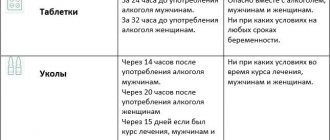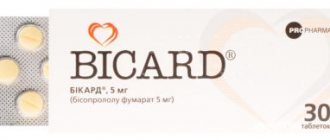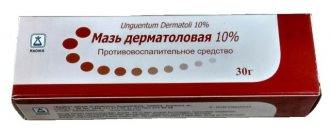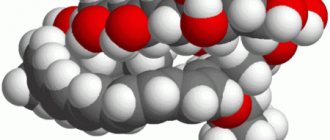Indications and contraindications for the use of Rosuvastatin
There are two main indications for taking this drug:
- Hypercholesterolemia.
- Hypertriglyceridemia.
It should be noted that, together with treatment with Rosuvastatin, strict adherence to the diet prescribed by the doctor is mandatory. Otherwise, the effectiveness of the drug is sharply reduced.
The use of the drug is limited if patients have the following conditions:
- The presence of individual hypersensitivity to the main or additional ingredients of the drug.
- Acute and chronic liver diseases.
- Myopathy.
- Chronic kidney disease.
- Pregnancy and breastfeeding period.
- Sepsis.
- Severe injuries.
If there are serious indications, Rosuvastatin can be prescribed with extreme caution to patients with endocrine pathology, as well as to patients under the age of 18 and over 60 years of age.
Adverse reactions and symptoms of overdose
Taking the drug may be accompanied by a large number of side effects. Most often, patients develop the following conditions:
- From the musculoskeletal system: arthritis, myositis, myopathies.
- CNS: headaches, dizziness, sleep disturbances, anxiety, depressive thoughts.
- From the respiratory system: cough, bronchial asthma, rhinitis, pharyngitis, tracheitis, bronchitis and pneumonia.
- Urinary tract infections.
- Gastrointestinal tract: dyspeptic syndrome, bloating, gastritis.
- From the cardiovascular system: tachycardia or angina.
- Allergic reactions.
An overdose of the drug is currently not described.
Instructions for use of Rosuvastatin
The dosage is selected by the attending physician depending on the severity of the lipid profile disorder and the presence of cardiovascular risk.
The starting dose is 10 mg per day. If necessary, it is possible to increase the amount of the drug taken to 20 or 40 milligrams, but not earlier than after the start of treatment.
Increasing the daily dosage is possible only under the strict supervision of a specialist.
The drug should be taken whole, without chewing and with a sufficient amount of water. It is advisable to take the medication before meals.
Rosuvastatin
Renal dysfunction
In patients receiving high doses of rosuvastatin (particularly 40 mg/day), tubular proteinuria was observed, which was detected using test strips and in most cases was intermittent or short-term. Such proteinuria does not indicate acute illness or progression of concomitant renal disease. The incidence of serious renal dysfunction observed in post-marketing studies of rosuvastatin is higher when taking a dose of 40 mg/day. In patients taking Rosuvastatin at a dose of 30 or 40 mg/day, it is recommended to monitor renal function during treatment (at least once every 3 months).
Effect on the musculoskeletal system
The following musculoskeletal effects have been reported with rosuvastatin at all doses, but particularly at doses greater than 20 mg/day: myalgia, myopathy, and in rare cases, rhabdomyolysis. Very rare cases of rhabdomyolysis have been reported with the simultaneous use of HMG-CoA reductase inhibitors and ezetimibe. This combination should be used with caution, as pharmacodynamic interactions cannot be excluded.
As with other HMG-CoA reductase inhibitors, the incidence of rhabdomyolysis with post-marketing use of rosuvastatin is higher when using a dose of 40 mg/day.
Determination of serum CPK activity
Serum CPK activity cannot be determined after intense physical exercise and in the presence of other possible reasons for an increase in its activity; this may lead to incorrect interpretation of the results obtained. If the initial serum CPK activity is significantly exceeded (5 times higher than the upper limit of normal), a repeat analysis should be performed after 5-7 days. Therapy should not be started if the results of a repeat analysis confirm the initial high serum CPK activity (more than 5 times the upper limit of normal).
Before starting therapy
Depending on the daily dose, Rosuvastatin should be administered with caution to patients with existing risk factors for myopathy/rhabdomyolysis.
These factors include:
- renal dysfunction,
- hypothyroidism,
- history of muscle diseases (including family history),
- history of myotoxic effects when taking other HMG-CoA reductase inhibitors or fibrates,
- excessive alcohol consumption,
- age over 65 years,
- conditions in which the concentration of rosuvastatin in the blood plasma may increase,
- simultaneous use of fibrates.
In such patients, it is necessary to evaluate the risks and possible benefits of therapy. Clinical monitoring is also recommended. If the initial serum CK activity is higher than 5 times the upper limit of normal, therapy with Rosuvastatin cannot be started.
During drug therapy
The patient should be informed to immediately report to the doctor if muscle pain, muscle weakness or spasms occur unexpectedly, especially in combination with malaise and fever. In such patients, serum CPK activity should be determined. Therapy should be discontinued if serum CPK activity is significantly increased (more than 5 times the upper limit of normal), or if muscle symptoms are severe and cause daily discomfort (even if serum CPK activity is no more than 5 times the upper limit of normal). exceeds the upper limit of normal). If symptoms disappear and serum CPK activity returns to normal, resumption of use of Rosuvastatin or other HMG-CoA reductase inhibitors in lower doses should be considered under close medical supervision. Monitoring serum CPK activity in the absence of symptoms is impractical.
Very rare cases of immune-mediated necrotizing myopathy have been reported with clinical manifestations in the form of persistent weakness of the proximal muscles and increased CPK activity in the blood serum during therapy or upon discontinuation of the use of HMG-CoA reductase inhibitors, including rosuvastatin. Additional studies of the muscular and nervous system, serological studies, and therapy with immunosuppressive drugs may be required. There were no signs of increased effects on skeletal muscles when taking rosuvastatin and concomitant therapy. However, an increase in the number of cases of myositis and myopathy has been reported in patients taking other HMG-CoA reductase inhibitors in combination with fibric acid derivatives (for example, gemfibrozil), cyclosporine, nicotinic acid in lipid-lowering doses (more than 1 g / day), antifungals - azole derivatives, HIV protease inhibitors and macrolide antibiotics.
When used simultaneously with certain HMG-CoA reductase inhibitors, gemfibrozil increases the risk of developing myopathy. Thus, the simultaneous use of Rosuvastatin and gemfibrozil is not recommended. The benefits of further changes in plasma lipid concentrations when using the drug Rosuvastatin in combination with fibrates or nicotinic acid in lipid-lowering doses must be carefully weighed against the possible risks. The drug Rosuvastatin at a dose of 40 mg/day is contraindicated for combination therapy with fibrates.
Rosuvastatin should not be used simultaneously or within 7 days after discontinuation of systemic fusidic acid therapy. In patients in whom the use of fusidic acid is considered necessary, statin therapy should be discontinued for the entire duration of fusidic acid therapy. There have been reports of rhabdomyolysis (including death in some cases) in patients receiving fusidic acid concomitantly with statins. The patient should seek immediate medical attention if any symptoms of muscle weakness, pain, or tenderness occur.
Therapy with Rosuvastatin can be resumed 7 days after the last dose of fusidic acid.
In exceptional cases, when long-term use of systemic fusidic acid is required, for example, in the treatment of severe infections, the need for simultaneous use of Rosuvastatin and fusidic acid should be considered individually and subject to careful medical supervision.
Due to the increased risk of rhabdomyolysis, Rosuvastatin should not be used in patients with acute conditions that may lead to myopathy or conditions predisposing to the development of renal failure (for example, sepsis, hypotension, major surgery, trauma, severe metabolic, endocrine or electrolyte disturbances , uncontrollable seizures).
2-4 weeks after the start of treatment and/or when the dose of Rosuvastatin is increased, monitoring of lipid metabolism parameters is necessary (dose adjustment is required if necessary).
Liver
Depending on the daily dose, Rosuvastatin should be used with caution in patients with excessive alcohol consumption and/or in patients with a history of liver disease, or its use is contraindicated (see sections "Contraindications" and "Precautions").
It is recommended to determine liver function tests before the start of therapy and 3 months after its start. The use of the drug Rosuvastatin should be discontinued or the dose of the drug should be reduced if the activity of “liver” transaminases in the blood serum is 3 times higher than the upper limit of normal.
In patients with hypercholesterolemia due to hypothyroidism or nephrotic syndrome, underlying diseases should be treated before starting treatment with Rosuvastatin.
Ethnic characteristics
During pharmacokinetic studies, an increase in the plasma concentration of rosuvastatin was noted in representatives of the Mongoloid race compared to representatives of the Caucasian race.
Interstitial lung disease
Isolated cases of interstitial lung disease have been reported with the use of certain HMG-CoA reductase inhibitors, especially over long periods of time. Manifestations of the disease may include shortness of breath, non-productive cough and deterioration in general health (weakness, weight loss and fever).
If interstitial lung disease is suspected, therapy with HMG-CoA reductase inhibitors should be discontinued.
Diabetes mellitus type 2
In patients with glucose concentrations between 5.6 and 6.9 mmol/L, rosuvastatin therapy was associated with an increased risk of developing type 2 diabetes mellitus.
HIV protease inhibitors
Concomitant use of the drug with HIV protease inhibitors is not recommended (see section “Interaction with other drugs”).
Special information on excipients
The drug Rosuvastatin contains lactose and is therefore contraindicated in patients with lactose intolerance, lactase deficiency, and glucose-galactose malabsorption syndrome.
Analogues of the drug
The drug has a fairly large number of analogues. Their cost can be both higher and lower and varies from 100 to 1000 rubles.
The most well-known analogues of Rosuvastatin include: Pravastatin, Lipitor, Simvastol, Lovastatin, Rozulip, Simvastatin, Atoris, Roxera, Crestor and a number of other drugs.
It is not recommended to change one medicine to another without the consent of a specialist. If necessary, the doctor himself will adjust the treatment, change the dosage and prescribe another drug.
Compound
1 tablet of the drug contains 10.40 mg or 20.80 mg of the active ingredient rosuvastatin and excipients: corn starch, magnesium stearate, microcrystalline cellulose, povidone, calcium hydrogen phosphate dihydrate.
Each tablet is film coated. Film shell composition: selecoate AQ-01032 red, titanium dioxide, hypromellose, macrogol-400, macrogol-6000.
Depending on the dosage (10 mg, 20 mg, 40 mg), the composition of the tablet changes.








